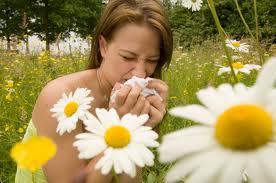Hay fever or also known as allergic rhinitis causing runny nose, sneezing, congestion and sinus pressure which are similar to signs and symptoms of a cold. However, hay fever is not caused by a virus. Allergic response to indoor or outdoor allergens like dust mites, pollen or pet dander are the reasons behind of having hay fever. Hay fever is very common which affects more than 1 in 5 people. For some people hay fever symptoms occur all year-round but for some it worsen at certain times of the year, typically in the summer, spring or fall.
Hay fever can be a hinder with your leisure activities and can even affect your performance at work or school making you distressed. However, you don’t have to get distracted with the irritating symptoms of hay fever. Identify the things that can trigger and try to avoid it with finding the correct treatment can be a great help in avoiding the hay fever symptoms to get worse.
What are the symptoms of hay fever?
Hay fever symptoms normally begin right away once you are exposed to a particular allergy-causing substance or called allergen and it includes the following.
- Nasal congestion and runny nose
- Itchy or watery eyes
- Sneezing
- Cough
- Itchy nose, roof of mouth or throat
- Facial pain and sinus pressure
- Blue-colored and swollen skin under the eyes or called allergic shiners
- Reduced sense of taste or smell
Hay fever can occur at any age, though it is most possibly to develop during childhood or early adulthood. It is normal for the severity of hay fever responses to vary over the years. Hay fever symptoms have a tendency to lessen gradually for the majority of people, but frequently over years.
What are the causes of hay fever?
In sensitization process is a process wherein the immune system erroneously recognizes a nontoxic substance in the air as something destructive. The immune system in that case begins creating antibodies to this nontoxic or harmless substance. The next time you are being exposed with the substance the antibodies may be able to identify it and make warning sign to the immune system to release chemicals called histamine into the bloodstream. This histamine is the reason of a reaction that results to the annoying symptoms of hay fever.
The seasonal hay fever triggers are the following.
- Tree pollen which is common during spring
- Grass pollen which is common during late spring and summer
- Weed pollen which is common during fall
- Spores from fungi and molds which worsen during warm-weather months
The year-round hay fever triggers are the following.
- Cockroaches or dust mites
- Dander from pets like dogs, cats and birds
- Spores from outdoor or indoor fungi and molds
Hay fever does not imply that you are sensitive or allergic to hay. In spite of its name, hay fever is not at all caused by hay and it does not cause a fever.
What is the risk factors affecting hay fever?
The following are the factors that may enhance the possibility of having hay fever.
- Having asthma or other allergies
- If there is member in the family with asthma or allergies
- Male is more prone to hay fever than female
- Having exposed to cigarette smoke for the first period of life
- Working or living in a surroundings that persistently exposes you to allergens like animal dander
What are the hay fever treatments?
To avoid the substances that may cause your allergic reaction is the great treatment for hay fever. But, this is not at all times being the case and you have to apply other treatments to avoid the exposure. The following are the hay fever medications.
1.    Use of nasal corticosteroids.
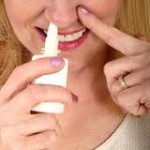 These medications in the form of spray are frequently the first kind of medication most prescribed by the doctor. This nasal sprays help to avoid and treat the nasal itching, nasal inflammation and runny nose caused by the hay fever. Nasal corticosteroids are the most effective and safe for continuing treatment for the majority of people. Examples of nasal corticosteroid are fluticasone, fluticasone furoate, mometasone and beclomethasone. Side effects are disagreeable taste or smell and nose irritation.
These medications in the form of spray are frequently the first kind of medication most prescribed by the doctor. This nasal sprays help to avoid and treat the nasal itching, nasal inflammation and runny nose caused by the hay fever. Nasal corticosteroids are the most effective and safe for continuing treatment for the majority of people. Examples of nasal corticosteroid are fluticasone, fluticasone furoate, mometasone and beclomethasone. Side effects are disagreeable taste or smell and nose irritation.
2.    Intake of anithistamines.
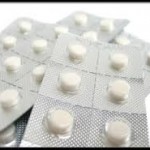 Antihistamines can help to relieve the sneezing, itching and runny nose but work less on congestion. These preparations used to block the histamine, a chemical that is being released by the immune system during an allergic response. These medications are frequently in the form of pills. But there are also antihistamines preparations in the form of eye drops and nasal sprays. Examples of over-the-counter antihistamines are diphenhydramine, loratadine and cetirizine. Fexofenadine is a prescription medication. The prescription antihistamines in the form of nasal sprays are azelastine and olopatadine that can ease the nasal symptoms. There is also an available olopatadine in the form of eye drops which help to ease the itchiness and irritation of the eye caused by hay fever.
Antihistamines can help to relieve the sneezing, itching and runny nose but work less on congestion. These preparations used to block the histamine, a chemical that is being released by the immune system during an allergic response. These medications are frequently in the form of pills. But there are also antihistamines preparations in the form of eye drops and nasal sprays. Examples of over-the-counter antihistamines are diphenhydramine, loratadine and cetirizine. Fexofenadine is a prescription medication. The prescription antihistamines in the form of nasal sprays are azelastine and olopatadine that can ease the nasal symptoms. There is also an available olopatadine in the form of eye drops which help to ease the itchiness and irritation of the eye caused by hay fever.
3.    Intake of decongestants.
 Decongestant medications are available in the form of liquids, tablets and nasal sprays. Examples of nasal sprays are phenylephrine and oxymetazoline. Oral decongestants have a lot of side effects which include the insomnia, irritability, increased blood pressure and headache. A decongestant nasal spray should not be use for more than two or three days at a time since it can only worsen the symptoms once used continuously.
Decongestant medications are available in the form of liquids, tablets and nasal sprays. Examples of nasal sprays are phenylephrine and oxymetazoline. Oral decongestants have a lot of side effects which include the insomnia, irritability, increased blood pressure and headache. A decongestant nasal spray should not be use for more than two or three days at a time since it can only worsen the symptoms once used continuously.
4.    Use of cromolyn sodium.
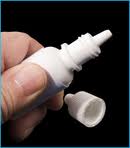 This preparation is in the form of nasal spray and considered as an over-the-counter medication. This medication should be used a number of times each day. This preparation is also available in eye drop with prescription. This medication used to prevent the release of histamine thus alleviating the symptoms of hay fever. It does not have serious side effects. Cromolyn sodium should be start using before hay fever symptoms begin to obtain its most effectiveness.
This preparation is in the form of nasal spray and considered as an over-the-counter medication. This medication should be used a number of times each day. This preparation is also available in eye drop with prescription. This medication used to prevent the release of histamine thus alleviating the symptoms of hay fever. It does not have serious side effects. Cromolyn sodium should be start using before hay fever symptoms begin to obtain its most effectiveness.
5.    Intake of leukotriene modifier.
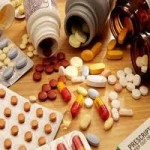 Best example of leukotriene modifier is the montelukast. It is a prescription medication in the form of tablet that used to block the action of leukotrienes, chemicals released by the immune system causing allergy symptoms like an excessive production of mucus. It is particularly effective in treating allergy-induced asthma. It is frequently used when hay fever symptoms have already mild asthma and once the nasal sprays cannot be tolerated anymore.
Best example of leukotriene modifier is the montelukast. It is a prescription medication in the form of tablet that used to block the action of leukotrienes, chemicals released by the immune system causing allergy symptoms like an excessive production of mucus. It is particularly effective in treating allergy-induced asthma. It is frequently used when hay fever symptoms have already mild asthma and once the nasal sprays cannot be tolerated anymore.
6.    Use of nasal ipratropium.
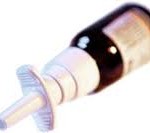 This medication helps to alleviate a severe runny nose and available in a prescription nasal spray. This nasal spray works by preventing the glands inside the nose from making excess fluid. Side effects of this medication include the nosebleeds, sore throat and nasal dryness. This is not advisable to use for men with enlarged prostate and people with glaucoma.
This medication helps to alleviate a severe runny nose and available in a prescription nasal spray. This nasal spray works by preventing the glands inside the nose from making excess fluid. Side effects of this medication include the nosebleeds, sore throat and nasal dryness. This is not advisable to use for men with enlarged prostate and people with glaucoma.
7.    Intake of oral corticosteroids.
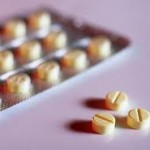 This medication is in the form of pill like prednisone. It is used to alleviate severe hay fever symptoms. These medications are not recommended for long-term use because it can cause serious side effects like osteoporosis, cataracts and muscle weakness.
This medication is in the form of pill like prednisone. It is used to alleviate severe hay fever symptoms. These medications are not recommended for long-term use because it can cause serious side effects like osteoporosis, cataracts and muscle weakness.
Knowing of what you are allergic to and trying to avoid it can bring great help to prevent the hay fever symptoms. Consult your doctor for severe hay fever symptoms for the best treatment.
